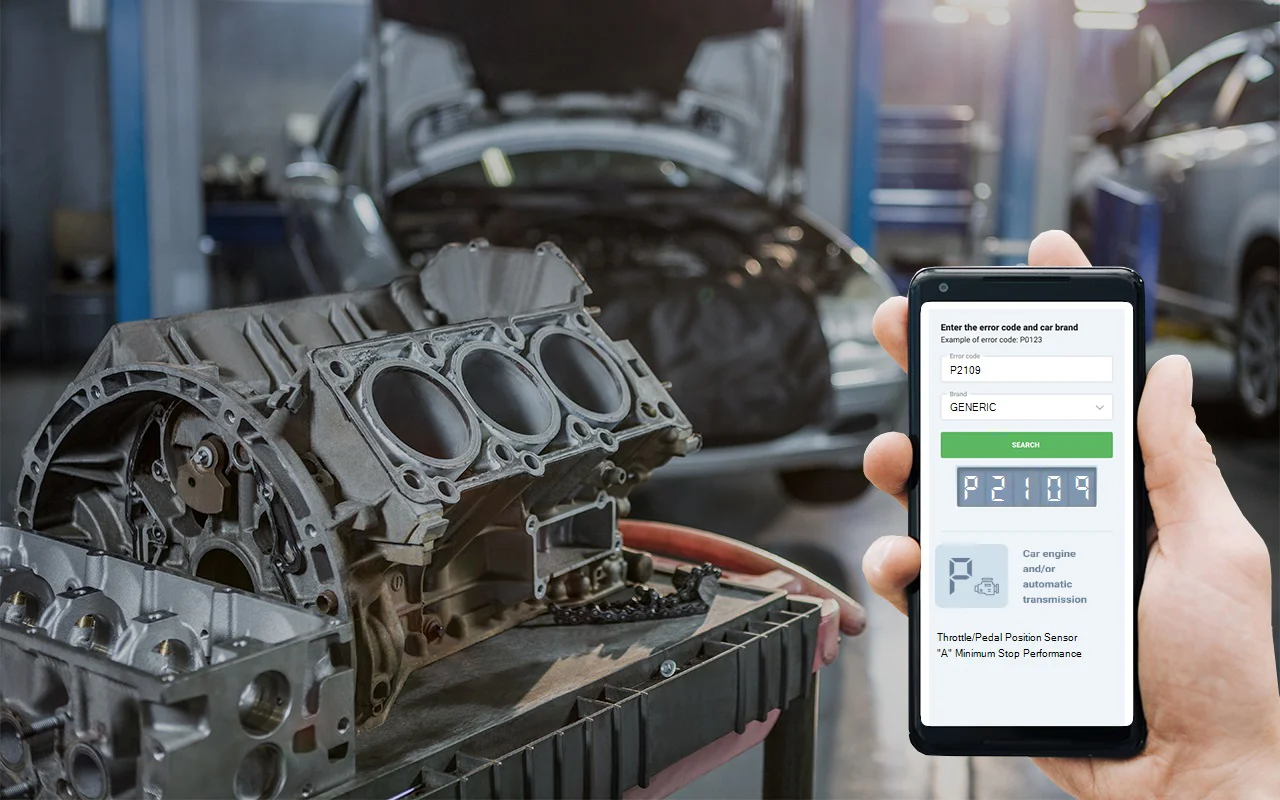Whenever I see the p2109 code pop up, I know the car’s PCM is flagging that the electronic throttle plate isn’t closing all the way down to its lowest stop when you first turn the key. In plain English, that plate is what controls how much air your engine breathes, and these days, it’s handled by the electronic throttle body instead of the old mechanical cable system. The PCM expects that plate to hit its fully closed mark right away-if it’s slow, sticky, or doesn’t get there, you’ll get this code. This system’s not just for show, either. It’s absolutely vital for smooth idle, safe starts, and keeping your engine from running away. Ignore it, and you’re asking for trouble.
DTC P2109
Causes of obd code P2109
From experience, the most common reasons I see for a p2109 code are pretty straightforward. Here’s what usually triggers it:
- Something physically blocking the throttle plate-like carbon buildup, debris, or even a misaligned air hose.
- A damaged or sticking electronic throttle body (ETB) that can’t move the plate freely.
- Occasionally, a wiring or connector issue at the throttle body, but that’s less common for this code.
Most often, it’s just gunk or a sticky throttle plate, but I’ve seen a few throttle bodies go bad, too.
Symptoms of P2109 code
If you’re dealing with p2109, you’ll probably notice some or all of these issues:
- The engine might idle rough or higher than normal.
- Sometimes, the car won’t start easily or may even stall right after starting.
- You could see the check engine light come on, and in some cases, the car might go into ‘limp’ mode-meaning reduced power to protect the engine.
It’s not the kind of thing you want to ignore, since it can make driving unpredictable or even unsafe.

Diagnosis steps for P2109 engine code
Let me walk you through how I’d tackle a p2109 code in my own bay-it’s not rocket science, but there’s a right way. First, with the engine off and the key on, I’ll watch and listen for the throttle plate to move when someone turns the key. If you hear grinding or nothing at all, that’s your first clue. Next, I pull off the air intake hose and take a close look at the throttle plate. Shine a flashlight in there-sometimes you’ll spot a chunk of carbon or dirt that’s keeping things from moving right. Try nudging the plate by hand (engine off, please); it should move smoothly and snap back. If it’s stuck or feels gritty, there’s your problem. If the plate looks clean and moves as it should, don’t overlook the wiring and connector-they can corrode or work loose, especially on older cars. When all else fails, I’ll break out a scan tool and command the throttle plate to open and close, watching for lag or if it can’t hit that closed mark. Pro tip: It always helps to have a second set of hands-one to turn the key and one to watch the plate.

Common Mistakes with P2109
A classic mistake I see is folks running out to buy a new throttle body before checking the basics. So many times, it’s just a pile of carbon or a loose hose jamming things up. Skipping that visual inspection is a rookie move. Also, don’t forget to wiggle the connectors and tug the wiring a bit. I’ve seen more than one tech get burned by a simple loose plug that throws the same code as a faulty throttle body. Taking the extra five minutes to check the obvious can save you a wad of cash and a lot of frustration.

Seriousness of dtc P2109
If you’re wondering if you can just drive around with this one, let me stop you right there. When the throttle plate won’t close, you’re looking at an engine that could idle too high or stall out without warning. Try dealing with that in stop-and-go traffic-trust me, I’ve seen it, and it’s not pretty. On top of the immediate safety risks, ignoring this code can wreck your throttle body or even mess with your engine’s air/fuel mix, leading to bigger headaches and higher repair bills. My advice? Don’t push your luck-get it fixed before it leaves you stranded.
Repair steps for P2109 trouble code
Over the years, I’ve found these steps almost always do the trick for a p2109: First, take the time to thoroughly clean the throttle plate and bore-get every bit of carbon and debris out of there. Nine times out of ten, that’s all it takes. If it’s still not behaving after a good cleaning, then it’s time to inspect or swap out the electronic throttle body (ETB). Don’t forget to look over the wiring and connectors for any signs of trouble. After you’ve tackled the root cause, clear the code and perform a throttle relearn if your vehicle calls for it-some Toyotas and other makes require this step. Here’s my advice: always start simple. Don’t be the guy who replaces parts before grabbing a can of throttle body cleaner.
Conclusion
Bottom line? When you see p2109, your throttle plate isn’t closing like it should-and that’s not something to shrug off. Usually, it’s just dirt or sticky buildup, but sometimes you’re dealing with a failing throttle body. Start with a thorough cleaning and inspection, and only move to replacement if you have to. Taking care of it right away keeps your engine (and you) out of trouble. Oh, and I’ve seen this show up plenty on Toyotas and other brands, so don’t think it can’t happen to your ride. Stay on top of it, and you’ll avoid a world of hassle down the line.




